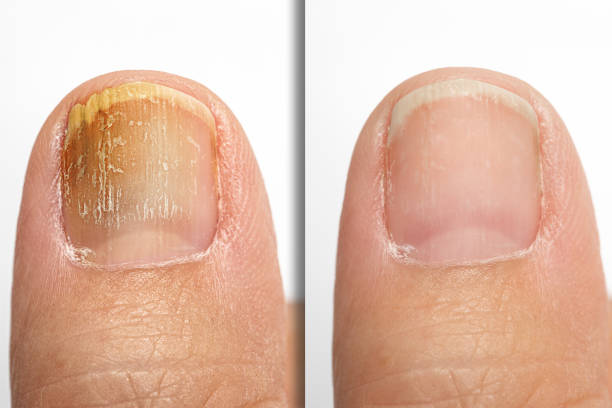Gothic Glamor is not just a fashion statement; it’s an expression of a unique identity that blends the allure of mystery with the elegance of a bygone era. Captivating Gothic dresses serve as the cornerstone of this style, offering a way to stand out from the crowd while embracing the beauty of darkness. These ensembles are characterized by their rich fabrics, intricate lacework, and a color palette that often leans towards deep, moody hues. The Gothic aesthetic is about more than just clothing; it’s a lifestyle choice that celebrates individuality and a departure from the mainstream.
The essence of Gothic Glamor lies in its versatility. Whether you’re attending a formal event or just looking to add a touch of drama to your everyday wear, gotyckie sukienki provide a canvas for self-expression. From the sweeping hemlines of a full-length gown to the sharp tailoring of a corseted mini dress, each piece allows the wearer to showcase their personal style. Accessories play a pivotal role in Gothic fashion, with chokers, boots, and statement jewelry adding layers of complexity to the look.
Embracing Gothic Glamor means stepping into a world where fashion transcends time. It’s a nod to the Victorian era’s opulence, the romanticism of the medieval period, and the rebellious spirit of modern subcultures. Gothic dresses are not merely garments; they are works of art that tell a story with every stitch and silhouette. By choosing to wear a Gothic dress, you’re not just dressing up; you’re making a bold declaration of your presence and personality.
Key Elements of Gothic Dresses
Gothic dresses encapsulate a rich tapestry of design elements that are both distinctive and deeply symbolic. At the heart of these elements is the color scheme, where black predominates, often accented with shades of deep red, purple, or emerald green. This color palette is not just a style choice; it’s a representation of the Gothic subculture’s affinity for the night and the mysterious.
The fabrics used in Gothic dresses are just as important as the colors. Luxurious velvet, flowing chiffon, and delicate lace are staples, providing a tactile experience that is as opulent as it is visually striking. These materials are often layered and combined to create a sense of depth and complexity in the garment’s texture.
Another key element is the silhouette. Gothic dresses often feature corseted waists, emphasizing an hourglass figure reminiscent of Victorian fashion. The skirts may be voluminous, with tulle or crinoline underskirts to add fullness, or they might be sleek and form-fitting, allowing for a more modern interpretation of the Gothic look.
Detailing on Gothic dresses is intricate and intentional, with embroidery, beading, and metallic accents like studs or buckles adding to the overall aesthetic. These details are not merely decorative; they often incorporate Gothic motifs such as skulls, crosses, or roses, which hold significance within the culture.
The accessories paired with Gothic dresses are integral to the style. Chokers, lace gloves, and ornate belts not only complement the dress but also serve to reinforce the Gothic identity. Footwear, too, is carefully chosen, with boots or high heels featuring buckles, straps, or lace details to match the dress’s aesthetic.
Different Types of Gothic Dresses to Consider
When exploring the world of Gothic fashion, one discovers a diverse array of dress styles, each with its own character and charm. The Victorian Gothic dress is perhaps the most iconic, with its long, flowing skirts and tight-laced corsets, often accompanied by sleeves that billow out before tapering to tight cuffs. This style harks back to the 19th century, embodying the period’s romanticism and sophistication.
For those who prefer a more modern twist, the Industrial Gothic dress incorporates elements of metal, leather, and asymmetry, reflecting the raw, mechanical aesthetic of the industrial era. These dresses often feature metallic hardware, unconventional cuts, and a darker, more urban feel.
The Romantic Gothic dress, on the other hand, is all about softness and sensuality. With an emphasis on lace and ruffles, these dresses often come in softer shades of black and may include touches of pastel to soften the overall look. The silhouettes are flowing and ethereal, creating a dreamy, otherworldly vibe.
Punk Gothic dresses are edgier and more rebellious, often shorter in length and paired with combat boots or studded accessories. They embody the punk movement’s spirit with their DIY aesthetic and often include elements like safety pins, patches, or distressed fabric.
The Cyber Gothic dress is a futuristic take on the Gothic style, featuring neon accents, reflective materials, and a combination of synthetic fabrics. This style is bold and avant-garde, often paired with cyberlox hair extensions and goggles, making a statement about the fusion of past and future.
How to Style Gothic Dresses for Different Occasions
Styling Gothic dresses for various occasions is an art that combines the dramatic flair of the Gothic aesthetic with the nuances of event-appropriate attire. For a formal event, such as a ball or a gala, opt for a Victorian Gothic dress with a full-length skirt and a fitted bodice. Enhance the elegance with opera-length gloves, a sophisticated updo hairstyle, and classic jewelry like silver chokers or cameo brooches.
When attending a casual gathering or a day out, a shorter, more relaxed Gothic dress can be the perfect choice. Pair it with combat boots or chunky heels, and add a leather jacket for an edgy touch. Accessories like studded belts and wrist cuffs can add personality to the outfit without being too overbearing.
For a concert or a night out, channel the Punk Gothic style with a mini dress adorned with chains and belts. Layer with fishnet stockings or leggings, and complete the look with platform boots. Bold makeup, such as a dark lipstick and smoky eyes, will complement the rebellious vibe.
In a professional setting, subtlety is key. Choose a Gothic-inspired dress with a modest cut and pair it with a tailored blazer. Stick to monochromatic accessories and minimal jewelry to maintain a balance between personal style and office decorum.
During festive seasons or themed parties, embrace the Romantic Gothic style with a dress that features lace overlays and ruffled skirts. Accessorize with velvet ribbons, antique-style lockets, and lace parasols for a touch of whimsy and nostalgia.
Conclusion
Gothic Glamour is more than just a fashion choice; it’s a celebration of self-expression and the beauty found in the darkness. It’s about embracing your unique style and standing out with confidence. The world of Gothic dresses is vast and varied, offering something for everyone, from the elegance of Victorian Gothic to the futuristic edge of Cyber Gothic. Each dress is a statement, a piece of history, and a work of art that allows the wearer to tell their own story.
As we’ve explored, the key elements of Gothic dresses, the different types available, and how to style them for various occasions, it’s clear that Gothic fashion is adaptable and timeless. It’s not confined to one stereotype but is instead a versatile and ever-evolving art form. Whether you’re dressing for a grand event or simply expressing your day-to-day style, Gothic dresses provide a way to showcase your personality in a sophisticated and enchanting manner.
In conclusion, Gothic dresses are not just garments; they are an extension of the individual. They allow you to embrace your unique style with Gothic glamour, creating a look that is as unique as you are. So, wear your Gothic dress with pride, and let it be a reflection of your personal narrative, one that is as captivating and multifaceted as the Gothic culture itself. Embrace the Gothic elegance, and let your style shine in the most enchanting way.



